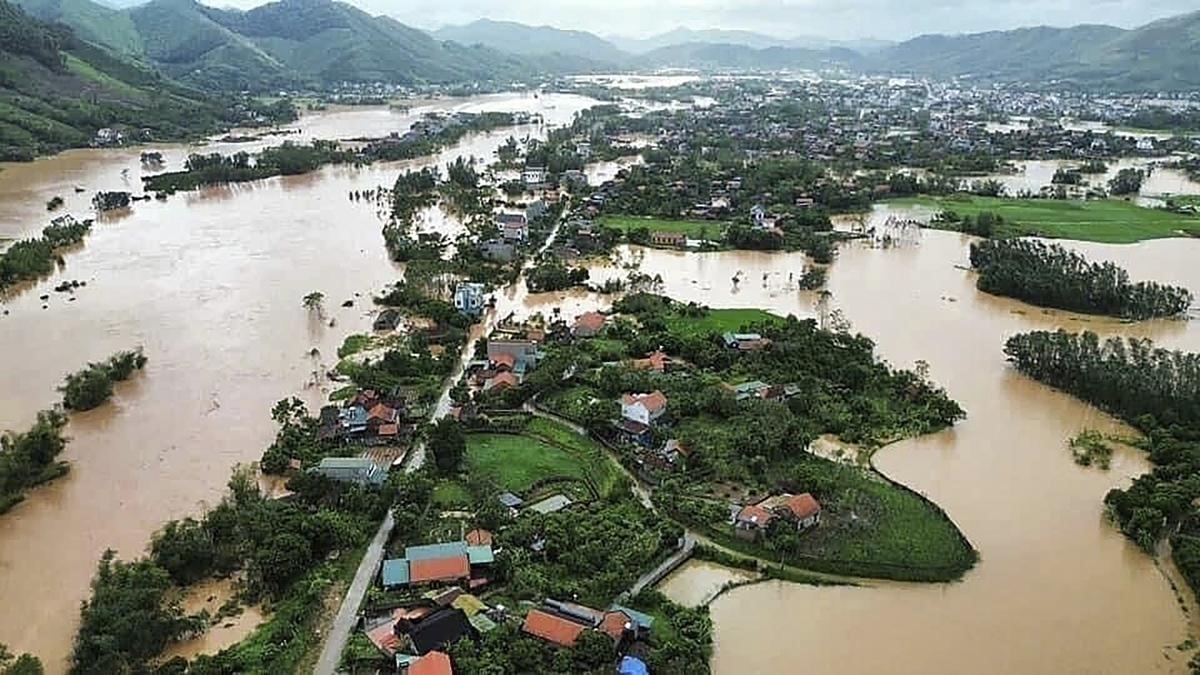Landslide in Vietnam Claims 22 Lives, Many More Missing, Reports State Media
In the wake of the devastating Typhoon Yagi, a landslide triggered by flash flooding has claimed the lives of at least 22 people and left 73 others missing in northern Vietnam. The tragic incident occurred on Tuesday, September 10, 2024, in the remote village of Lang Nu, located in Lao Cai province. According to multiple media reports, a total of 140 people were buried under the debris, with rescue teams managing to save only 30 individuals so far

Typhoon Yagi's Destruction Across Southeast Asia
Typhoon Yagi, which struck Vietnam's northeastern coastline over the weekend, has been described as the most powerful storm to hit the region in decades. The typhoon brought winds exceeding 149 kilometers per hour (92 miles per hour) and relentless rainfall, causing severe flooding across northern Vietnam and neighboring countries
The death toll from Typhoon Yagi has been steadily rising, with officials reporting over 140 fatalities in Vietnam alone. The flooding has also impacted Laos, Thailand, and Myanmar, with casualties reported in both Thailand and Laos. In Vietnam, the disaster management agency's latest report indicates that 127 individuals have lost their lives due to landslides and floods, while another 54 remain unaccounted for
Evacuation Efforts and Ongoing Rescue Operations
As floodwaters continue to rise, authorities in Vietnam have been working tirelessly to evacuate residents from affected areas. In the capital city of Hanoi, thousands of people have been relocated to temporary shelters as the Red River reaches its highest level in 20 years. Police, soldiers, and volunteers have been deployed to assist with the evacuation process, going door-to-door to ensure the safety of residents
The rescue efforts in Lang Nu village have been particularly challenging due to the remote location and lack of communication infrastructure. District party chief Hoang Quoc Bao stated that authorities are mobilizing forces to approach the landslide area and continue the search for survivors. However, the difficult terrain and ongoing threat of further landslides and flooding have hampered these efforts
Impact on Infrastructure and Agriculture
The typhoon and subsequent flooding have caused significant damage to infrastructure across northern Vietnam. A bridge over the Red River in Phu Tho province, which had stood for 30 years, collapsed on Monday, leaving eight individuals missing. Authorities have also imposed bans or restrictions on traffic across other bridges, including the Chuong Duong Bridge, one of Hanoi's major crossings
The agricultural sector has also been severely impacted, with reports indicating that over 29,000 hectares (71,002 acres) of cash crops have been damaged, along with nearly 50,000 homes. The flooding has submerged 162,000 hectares (400,357 acres) of land, further exacerbating the economic toll of the disaster
Climate Change and Extreme Weather Events
The intensity and frequency of typhoons in Southeast Asia have been increasing due to climate change. Warmer ocean temperatures provide more energy to fuel storms, leading to higher wind speeds and heavier rainfall. Benjamin Horton, director of the Earth Observatory of Singapore, emphasizes that storms like Typhoon Yagi are "getting stronger due to climate change."
As the region grapples with the aftermath of Typhoon Yagi, discussions about long-term strategies for disaster preparedness and climate resilience will likely intensify. Governments and international organizations will need to collaborate to develop effective response plans that can mitigate the impact of future extreme weather events.



